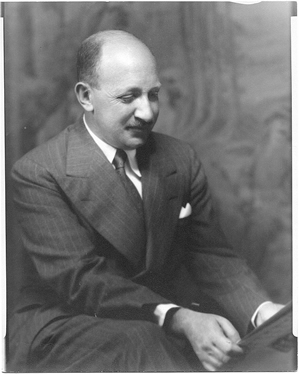
American composer. Born San Francisco May 4, 1891. Died October 24, 1952. Parents were German Jews. His grandfather came to the US in 1850. Born in California, the family went to NY, but took trips to California by train to visit relatives. For religious studies, Jacobi attended the Ethical Culture School (founded by Felix Adler in 1876), from 1901 to 1905, and again in 1906. Jacobi studied piano with Paul Gallico and Rafael Joseffy, and harmony and counter-point with Rubin Goldmark (who later also taught Aaron Copland and was head of Julliard composition faculty). His father died in 1911 and his mother in 1915. Jacobi inherited most of the money from his parent’s wine and real estate holdings, and so was able to live fairly comfortably during his life. He was able to go to study at the Paris Conservatoire under Isador Philip. From around 1910-12, he continued his studies at the Hochschule under Paul Juon for two years in Berlin. Between 1913-17, he served as Assistant Conductor at the Metropolitan Opera House, under Alfred Hertz and Artur Bodansky, generally serving as a rehearsal conductor. He also played piano at Met Sunday night concerts. Jacobi worked as a “repetiteur” (vocal coach) during the Metropolitan Opera’s 1916-17 season. His first orchestral composition to be publicly performed was the symphonic poem The Pied Piper premiered by Alfred Hertz and the San Francisco Symphony Orchestra March 24 and 26, 1916. On December 6, 1917, the San Francisco Symphony Orchestra premiered Jacobi’s A California Suite. Jacobi used native American themes in his compositions and also focused on American locales. Shortly after getting married in 1917, he enlisted in the Army where he learned to play the saxophone. In 1919, Jacobi studied composition with Ernest Bloch, who at that time, was one of the most performed contemporary composers in America. Jacobi became a great admirer of Stravinsky. In a 1929 performance of Les Noces, at the Metropolitan Opera, he performed on one of the four grand pianos, along with Aaron Copland, Marc Blitzstein, Louis Gruenberg. During the 1920s, Jacobi’s music became heavily influenced by Native American music and lore. String Quartet Based on Indian Themes composed in 1924. Jacobi spent part of 1927 in Taos , New Mexico, studying Indian music and culture resulting in Indian Dances, which premiered in Boston Symphony Orchestra on November 8, 1928. Jacobi was a charter member of the American Music Guild in New York and had many compositions performed. In 1930, Lazare Saminsky commissioned him to write a sacred service for Temple Emanuel in New York, the Sabbath Evening Service According to the Union Prayer Book for baritone solo (cantor) and mixed chorus, first performed in 1931. This established Jacobi as one of the important Jewish liturgical composers in the country while “not particularly of marked Jewish melos.” He continued to compose, writing more than forty works for orchestra and chamber groups. From 1925-1946, Jacobi served on the executive board of the League of Composers and also on the editorial board of its quarterly publication Modern Music. He also served on the American board of the International Society for Contemporary Music and the National Association for American Composers and Conductors. Jacobi taught composition from 1936, and later became head of the composition department at Julliard. In 1942 he began a collaboration with Herman Voaden on his opera The Prodigal Son, which was completed but never performed in his lifetime. “Frederick Jacobi was deeply involved in Jewish musical life, religion and culture in New York from the dedication of the new Temple Emanu-El on January 10, 1930 to his death in 1952.” Photo Credit: Fritz Jacobi, 1950. Used with permission. For more detailed information about Frederick Jacobi, see an article by Anton Wagner “Frederick Jacobi and Herman Voaden: The Prodigal Son”
Material for this essay based on information from the article by Anton Wagner located at:
http://www.lib.unb.ca/Texts/Theatre/voaden/theprodigalson_article.htm .
Wagner’s complete article is copyright University of New Brunswick.
